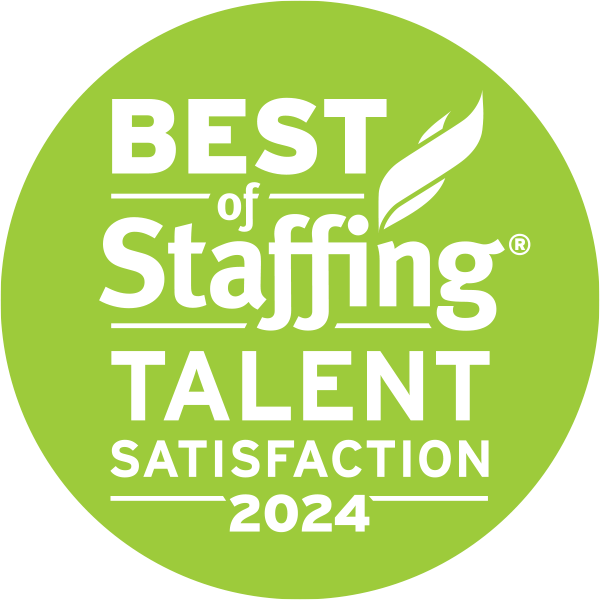
Many of today’s leading professions didn’t exist just a few years ago. And this trend is poised to continue through the years to come. Artificial intelligence (AI) advancements are predicted to result in 97 million new jobs. Since 2021, generative AI-related job posts have increased by over 250%. To paraphrase the now famous words of Professor Richard Baldwin — AI won’t replace you, but the human who can use it will.
In the midst of unpredictable market shifts, top brands aren’t just investing in this emerging technology; they’re leveraging it to cut costs, save time, and step ahead of the competition. Businesses everywhere race to develop and master the latest AI tools, but a tool is only as strong as the talent behind it. And true AI specialists remain in short supply. More than half of companies admit they don’t yet have the right AI talent to bring their strategies to life.
The need for AI skills and roles is growing faster than companies and professionals can adapt. Whether you’re looking to hire an AI expert or become one, explore the 10 most in-demand AI jobs for 2024 to thrive in the future of work.
- AI Prompt Engineer
- AI Artist
- AI Writer / AI Content Creator
- AI Research Scientist
- Machine Learning Engineer
- Data Scientist
- AI Chatbot Developer
- AI Product Manager
- AI Solutions Architect
- Chief AI Officer (CAIO)
1. AI Prompt Engineer
Hailed “the job of the future,” AI prompt engineers are among the most buzz-worthy and sought-after emerging AI professionals. These technical and creative experts use generative AI tools to produce everything from eye-catching graphics to high-ranking content. Their job is to provide AI with the detailed directions, questions or textual input to generate the best output. While prompt engineers are known for their ability to deliver quality, AI-generated results, they’re often hired to train and enhance the AI itself.
Frequently Used Tools for Prompt Engineering: GPT-4 Playground, PromptAppGPT, AllenNLP, Fairseq, BERT, RoBERTa, XLNet, T5, ALBERT
2. AI Artist
This new breed of professionals is a subset of AI prompt engineers that combines human creativity with generative AI technology to craft all forms of artwork. Graphic design. Photography. Animation. Music. You name it; AI can create or elevate it – but not without humans to lead the way. While critics remain skeptical, advocates believe the potential is undeniable. Despite the limitations of present-day technology, AI artists can already produce award-winning work in a fraction of the time. As machine learning capabilities rapidly advance, the demand for AI artists grows.
Frequently Used Tools for AI Art: NightCafe, Midjourney, Dream by WOMBO, Deep Dream, DeepAI, Starryai, Jasper Art, Artbreeder, Craiyon, NVIDIA StyleGAN, Runway ML
3. AI Writer / AI Content Creator
Even linguistics experts and present-day AI content detectors struggle to tell the difference between AI-generated content and human text at times. There’s no question the quality and accuracy of such content widely varies. However, the results aren’t just a testimony to the technology; they’re a reflection of the user, prompt engineer or AI writer. AI is only a tool. To produce effective content at record speeds, companies require skilled professionals who know their craft as well as their tech. While some leaders remain reluctant to hire AI writers, content automation is on the rise, and ‘AI writing’ skills are in increasingly high demand.
Frequently Used Tools for AI Writing: ChatGPT, Google BARD, Copy.ai, Grammarly, Jasper, Wordai, Writesonic, Rytr, Quilbot
4. AI Research Scientist
As every innovation begins with experimentation, AI research scientists are the people who make the technology possible. They’re responsible for planning AI experiments, performing analysis, and publishing the papers that advance projects, brands and the field at large. Even throughout headcount reductions, many tech companies continued to fill AI research roles. In recent years, organizations have exponentially increased their AI research efforts, publishing over 350,000 papers in 2023 alone. As we enter 2024, those numbers are only expected to grow.
Frequently Used Tools for AI Research: TensorFlow, PyTorch, Jupyter Notebook, scikit-learn, Google AI Platform, Microsoft Azure AI, IBM Watson, NVIDIA GPUs
5. Machine Learning Engineer
Machine learning (ML) is the innovation at the center of the AI talent rush. ML systems leverage data and algorithms to improve their own accuracy over time. Machine learning engineers design, test and enhance these algorithms, enabling AI to emulate the way humans learn. From facial recognition to predictive analytics and automation, the technology has countless real-world applications, and companies are investing heavily in it. Experts predict the machine learning market will rise from $140 million US dollars to nearly $2 trillion by 2030.
Frequently Used Tools for ML Engineering: TensorFlow, PyTorch, scikit-learn, Keras, XGBoost, Apache Spark, Amazon SageMaker, Microsoft Azure Machine Learning, Google AI Platform
6. Data Scientist
The US Department of Labor projects around 17,700 new data science jobs will open over the next year. These in-demand AI experts use machine learning models to analyze information and make data-driven predictions. While data scientists collaborate with machine learning engineers to build the algorithms, data scientists are primarily responsible for leveraging AI tools to collect information and derive insights. As AI can process and assess enormous datasets in real time, these scientists use it to uncover the patterns that humans otherwise couldn’t.
Frequently Used Tools for Data Science: Python, R, Jupyter Notebook, SQL, Tableau, Power BI, Apache Spark, scikit-learn, TensorFlow, PyTorch, Hadoop, Excel, SAS, RapidMiner, KNIME
7. AI Chatbot Developer / NLP Engineer
Since 2019, chatbots have seen a 92% increase in usage. They aren’t new, but they are of newfound importance. So are the AI experts responsible for designing, creating and maintaining them. Chatbot developers must master AI and natural language processing (NLP) to empower bots to understand users, sound like humans, and engage people in helpful conversations. With the recent rise in virtual assistants and customer support automation, these developers and engineers will be more critical than ever before to optimize customer experiences for 2024.
Frequently Used Tools for Chatbot Development: Rasa, Dialogflow, Microsoft Bot Framework, Amazon Lex, Wit.ai, spaCy, NLTK, BERT, ChatGPT, Transformers
8. AI Product Manager
While hundreds of new AI products launched in the last few months alone, studies show that 95% of new products fail. The AI product manager’s role is to close the gap between technology and business to ensure their products are among the 5% that succeed. These experts define the vision for AI products, prioritize features, and ensure that AI solutions meet customer needs. As more AI products, tools and startups seem to emerge every day – specialized product managers have become increasingly more popular at startups, tech companies and brands across industries.
Frequently Used Tools for AI Product Management: Jira, Trello, Asana, Confluence, Productboard, Aha!, Monday.com, Slack, Microsoft Teams
9. AI Solutions Architect
Approximately half of businesses reportedly plan to incorporate AI into their processes, but for most of these organizations, adoption remains a great challenge. Across industries, IT leaders struggle to move critical AI projects forward. Combining extensive research with experience, AI solutions architects help companies adapt. These in-demand professionals assess which AI tools, products or services would be best for a company to build or use. Then, they help develop and implement the systems themselves, leading AI projects from proof of concept to completion.
Frequently Used Tools for AI Architecture: AWS, Azure, Google Cloud, Docker, Kubernetes, Apache Kafka, Apache Flink, Databricks, TensorFlow Serving, ONNX
10. Chief AI Officer (CAIO)
Tasked with leading the AI revolution, chief AI officers (CAIOs) shape AI strategies, oversee ethical implementation, and ensure that AI investments align with business objectives. While only a select few companies currently have full-time CAIOs in place, there’s a growing demand for fractional CAIOs. These leaders act as part-time executives for organizations that don’t yet have the capital or need for a full-time hire. As we enter 2024, organizations across industries – including hundreds of federal agencies – are reportedly seeking more than 400 chief AI officers.
Frequently Used Tools of CAIOs: Tableau, Power BI, QlikView, Alteryx, DataRobot, Domo, ThoughtSpot, Snowflake, Looker, Sisense
Hire human talent to use AI to its fullest potential.
Onward Search specializes in staffing and talent solutions at the intersection of creative and technology. Artificial intelligence is a growing area of focus for our company, and we’ve already helped many of our 3,000+ clients hire a wide variety of AI experts to develop chatbots, drive content automation, and advance strategic initiatives.
Request AI expertise.
Tell us what you’re looking for, and connect with pre-qualified AI specialists.









